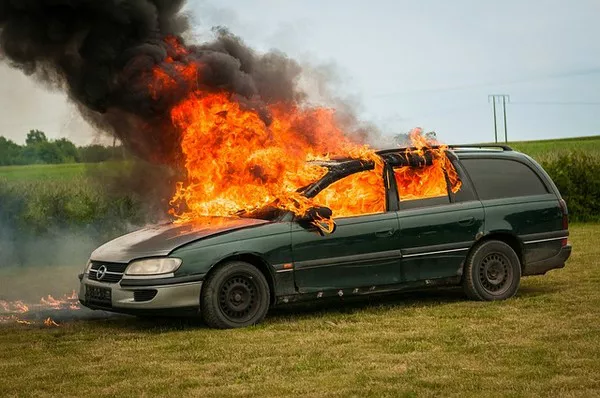Car fires are an unfortunate but real risk that motorists may encounter on the road. Whether it’s due to a collision, an electrical malfunction, or a fuel leak, the potential for fires in vehicles necessitates the presence of a reliable fire extinguisher. The importance of having the appropriate fire extinguisher for cars cannot be understated, as it can prevent a minor fire from escalating into a catastrophic event. In this article, we will explore the different types of fire extinguishers used for cars, their features, and how to choose the most suitable one to ensure optimal automotive safety.
Understanding Fire Classes
Before delving into the specifics of fire extinguishers, it’s essential to understand the concept of fire classes. Fires are categorized into five main classes, each characterized by the type of fuel involved. The classes are as follows:
Class A: Fires involving ordinary combustibles, such as wood, paper, and cloth.
Class B: Fires fueled by flammable liquids, including gasoline, oil, and diesel.
Class C: Fires resulting from electrical equipment or wiring.
Class D: Fires involving combustible metals, such as magnesium, lithium, or titanium.
Class K: Fires caused by cooking oils and fats, typically found in commercial kitchens.
Determining the Appropriate Fire Extinguisher for Cars
To select the appropriate fire extinguisher for automotive use, it is crucial to consider the most likely fire scenarios that could arise. In the case of cars, Class A, B, and C fires are the most common, making multi-purpose fire extinguishers ideal for vehicles. These extinguishers are typically labeled as “ABC” or “BC” fire extinguishers, indicating their suitability for extinguishing multiple types of fires.
ABC Fire Extinguishers
ABC fire extinguishers contain a dry chemical agent, typically monoammonium phosphate or ammonium sulfate. The dry chemical works by interrupting the chemical reactions that sustain the fire, thus extinguishing it. These extinguishers are versatile and effective for combating Class A, B, and C fires. They are a popular choice for automotive use due to their ability to address the most common fire types found in vehicles.
Features of ABC Fire Extinguishers
1.Size and Weight: Since automotive space is limited, it’s essential to choose a compact and lightweight fire extinguisher that won’t consume valuable space or add unnecessary weight to the vehicle.
2. Easy-to-Use: During emergencies, every second counts. Look for fire extinguishers with straightforward operation, such as those equipped with a pull-pin and squeeze-grip mechanism, enabling quick activation.
3. Pressure Gauge: An integrated pressure gauge allows users to check the extinguisher’s readiness at a glance, ensuring it is charged and ready for use when needed.
4. Mounting Bracket: To ensure the extinguisher is readily accessible, consider purchasing one with a secure mounting bracket, designed to keep the extinguisher in place while driving.
Installation and Accessibility
Once you have chosen the appropriate ABC fire extinguisher, proper installation and accessibility are paramount. Consider the following guidelines:
1.Mount the extinguisher securely: Place the extinguisher in a location that is easily reachable by the driver and passengers, yet securely mounted to prevent becoming a projectile during sudden stops or collisions.
2. Avoid heat sources: Ensure the extinguisher is not installed near any heat sources or engine components that may increase the risk of accidental discharge.
3. Regular inspections: Periodically inspect the extinguisher to check for damage, corrosion, or leakage. Make sure the pressure gauge indicates that it is within the proper operating range.
4. Training and Familiarity: Educate all vehicle occupants about the location and usage of the fire extinguisher. It is essential that they are familiar with its operation to act swiftly in case of an emergency.
Conclusion
In conclusion, having a suitable fire extinguisher in your vehicle is a critical component of automotive safety. ABC fire extinguishers, designed to tackle Class A, B, and C fires, are the most appropriate choice for cars due to their versatility and effectiveness. When selecting an extinguisher, consider factors such as size, weight, ease of use, and proper installation to ensure it is readily accessible in case of an emergency. Remember that even the best fire extinguisher cannot replace proactive maintenance and care to prevent fire incidents in the first place. With the right equipment and responsible driving practices, motorists can minimize the risks associated with vehicle fires and drive with greater peace of mind.

